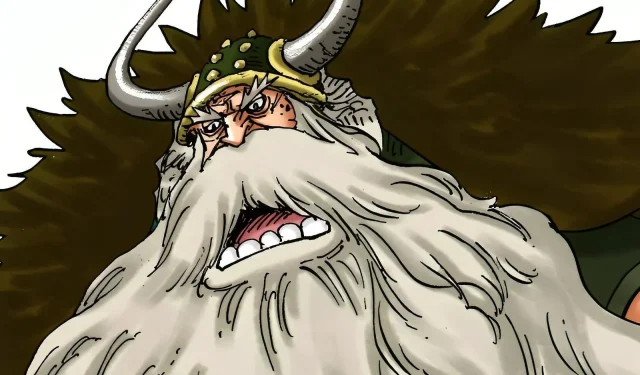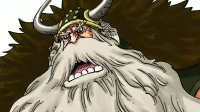The Elbaph Arc in One Piece is captivating fans with its deep narrative layers, drawing on a variety of inspirations as seen throughout the series. Recently, an insightful theory shared by X user @BlacktyonteXavi suggests that Jarul, a pivotal character in this arc, may actually be a traitor among the Giants.
Jarul, currently recognized as the oldest living Giant in the One Piece universe, has been linked to the English playing card dubbed the Suicide King. This card is emblematic of treachery, as it depicts a king with a sword driven into his head. This visual parallel raises intriguing questions about Jarul’s role in the demise of King Harald, suggesting that he may have been responsible for the king’s death rather than Loki.
Note: This article presents a speculative theory reflecting the author’s perspective.
Unraveling the Mystery of King Harald’s Death
Within the plot, Loki has been portrayed as imprisoned for the alleged murder of King Harald, as revealed by Jarul to Luffy. However, the striking resemblance of Jarul’s character design to the Suicide King card prompts speculation about a deeper betrayal. The notion that Jarul could have betrayed Harald suggests a complex web of motivations that lie beneath the surface.
The rationale behind such a betrayal remains hazy. King Harald reportedly advocated for peace between the Giants and the wider world, a prospect that Jarul may oppose. Additionally, the narrative hints at the late king’s connections to the World Government, possibly suggesting a smear campaign to distort his legacy.
Eiichiro Oda, the series creator, appears to have woven intricate clues regarding the circumstances surrounding Harald’s death. As the oldest Giant, Jarul might symbolize a yearning for tradition, resisting the changes that Harald sought to implement. While concrete motivations are not yet clear, the thematic connections elevate this theory’s plausibility.
The Complex Role of Loki

The Giants of Elbaph are richly informed by Norse mythology, with Jarul’s name deriving from the term Jarl, reminiscent of historical figure Haakon Sigurdsson. Known as a notorious traitor in Norse tales, Haakon betrayed Harold Greycloak, evoking parallels to the conflict between Jarul and King Harald.
An intriguing aspect of this legend is the backstory where Harold Greycloak’s father was responsible for the death of Haakon’s father. It’s conceivable that Oda drew inspiration from this complex history for the interwoven nuances of conflict seen in the current storyline. Moreover, the manga introduces elements like the Holy Knights, further complicating Loki’s situation and their intentions towards him.
Concluding Observations
The ongoing Elbaph arc continues to unfold numerous secrets in One Piece, with the idea that someone may have engineered the circumstances surrounding King Harald’s death being particularly compelling. This theory resonates with the complicated perceptions of the king’s reign and the subsequent repercussions felt throughout the Land of the Giants.


